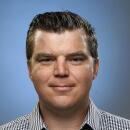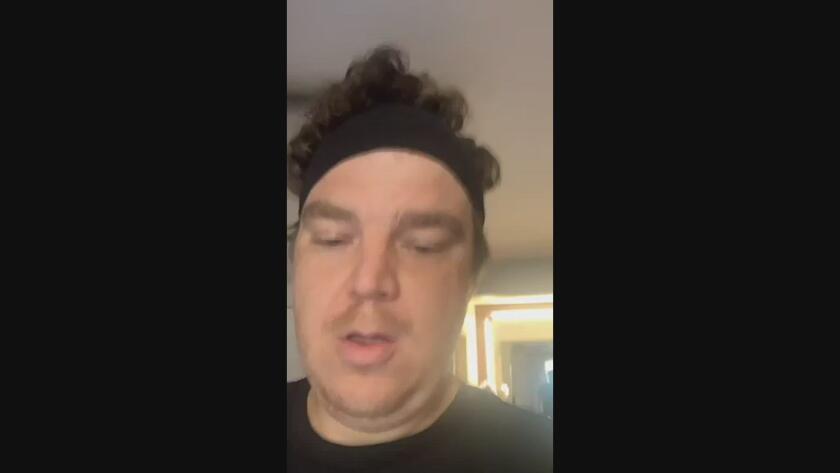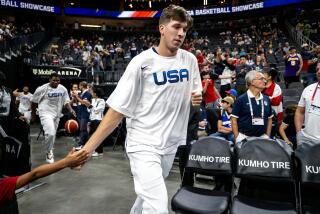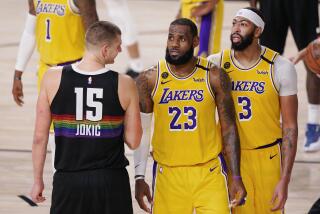24 things we learned about life inside the NBA bubble
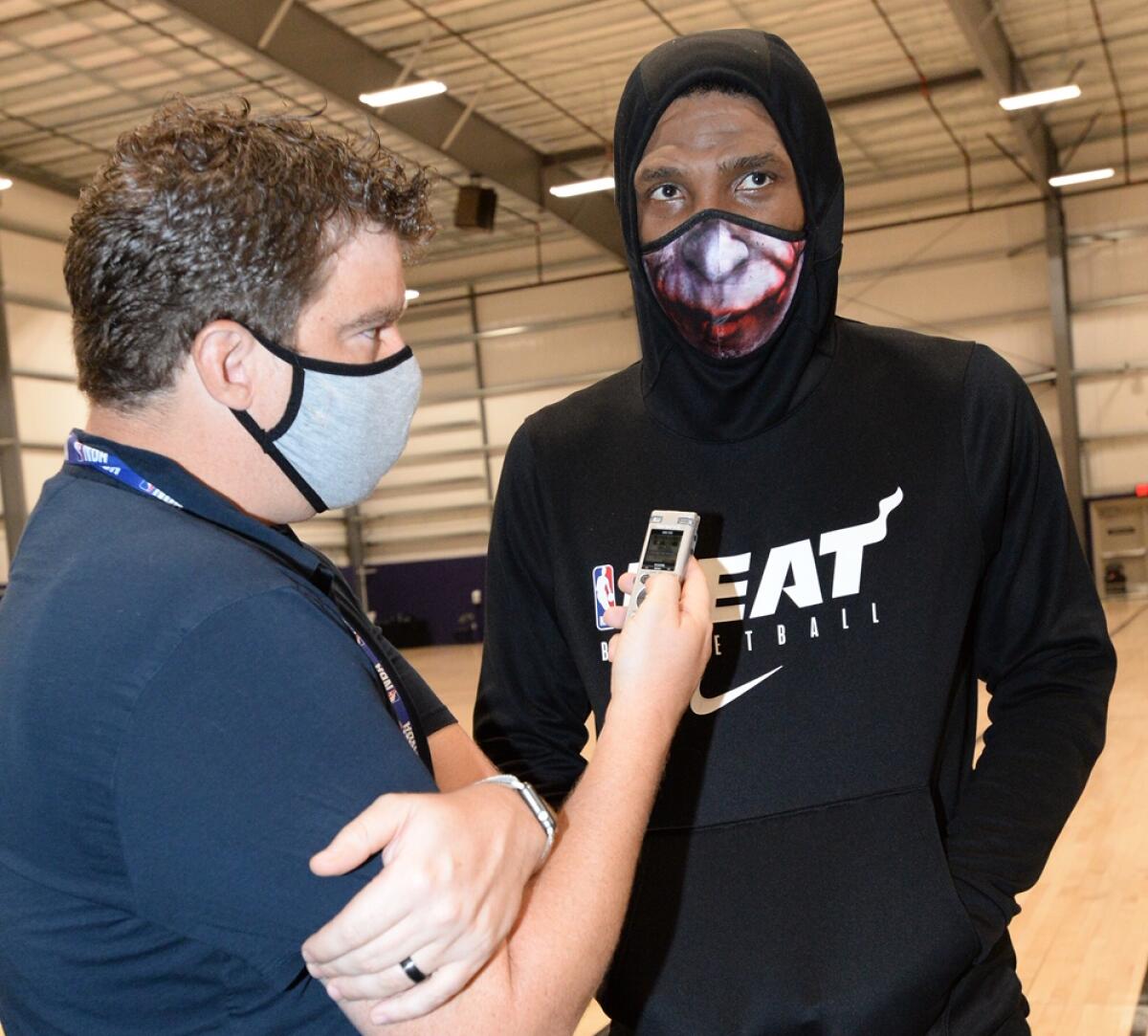
- Share via
Referee Marc Davis had a plan to keep his life as normal as possible inside the NBA’s bubble on the Disney World campus near Orlando, Fla.
“First thing I do in the morning,” Davis said, “is I make up my bed.”
It starts a routine — clean his room (“casita” if you want to speak proper Disney), exercise and swim, work on learning Spanish, and make time for reading. Fill in the gaps with some more exercise and maybe a game of pickleball or two.
Davis went to the U.S. Naval Academy, so that regimen checks out.
For a lot of people inside the bubble, this reporter included, it was a new experience, a summer camp without counselors sandwiched between the best basketball the NBA could stage during a pandemic.
It was fun. It was lonely. It was tiring. It was exciting. And mostly, it was confusing. Yes, it all led to the Lakers’ record-tying 17th championship.
People inside the bubble often would say that no one truly would understand what life was like unless you were there. Let’s try anyway with a shot-clock countdown:
24. As someone who got to the bubble after the playoffs started, I spent seven days in my room watching the world from my first-floor casita room.
23. By the way, “casita” here means a room with two full beds, and about 10 steps from the window to the bathroom sink. I know because I counted … every day during quarantine when I would go for my “walks” in my room. One day, I did six miles — 10 steps per lap from wall to wall. The quick turns got me dizzy.
- Share via
Times reporter Dan Woike was confined to a relatively small room, where he would do lap after lap as part of his exercise routine.
22. Otherwise, quarantine wasn’t so bad. Unlike the first group in the bubble, we got to leave our rooms to get tested — the best five minutes of the day. There were games at night that kept me busy. The food was somewhere between “not bad” and “fine,” and someone was kind enough to drop off a few bottles of wine.
21. The first day out of quarantine — the reward for seven consecutive negative COVID tests — was incredible. No one has ever been so excited to go out into 90% humidity. But after five minutes, it hits you that “this is it.” There’s a lake with a restaurant you can’t go to, a bunch of hotel rooms that you can’t go in, a cafeteria, a pool and a fitness center for which you have to make a 30-minute appointment. It starts to feel pretty small pretty quickly.
20. Every day people had to answer a medical questionnaire and check their temperature and blood oxygen levels as well as get tested — a swab in each nostril and another in your mouth. For the first week, I’d be anxious about the results and lose sleep over it. For the last month, I never even checked.
19. The environment the NBA created made everyone feel incredibly safe, while outside the campus the virus still was a huge part of daily life. It was incredible how quickly the bubble disconnected us from the real world.
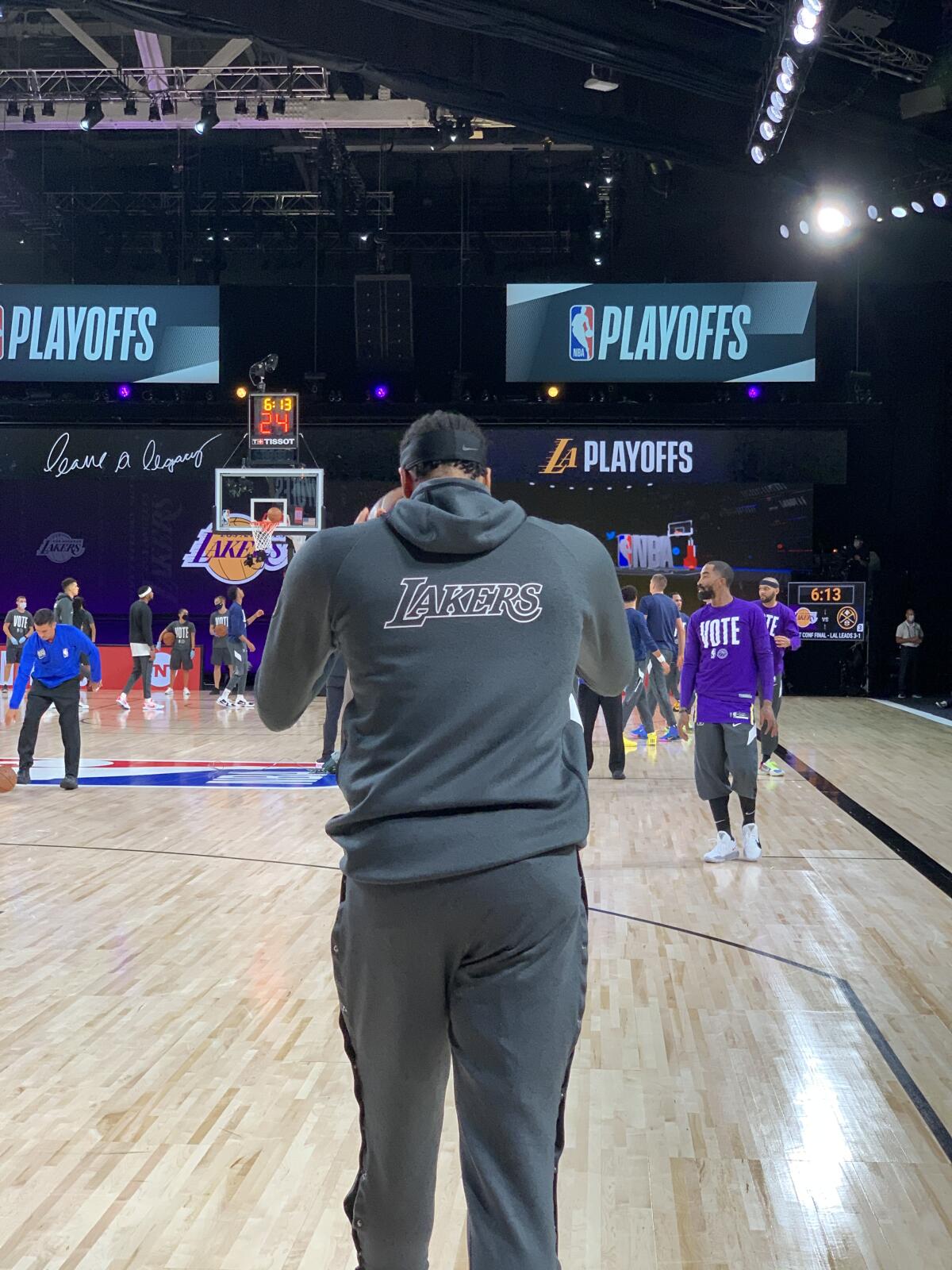
18. The first Lakers practice I went to, I asked general manager Rob Pelinka for any bubble tips. He said the one thing that made him happiest was eating at Three Bridges Bar & Grill, the outdoor restaurant in the middle of Lago Dorado. Pelinka raved about how great the breeze felt, how eating there made life feel a little normal. Reporters, though, weren’t allowed there.
17. Professionally, the bubble was great. The best interactions were in the hallways outside the convention center ballrooms the NBA converted into practice gyms. Toronto guard Fred VanVleet would be talking about Boston while the Celtics would walk by and eavesdrop. One day, Clippers coach Doc Rivers talked about Denver forward Paul Millsap playing a lot of golf when suddenly Millsap appeared.
16. Nothing made me happier than watching NBA referees argue calls with one another during their epic pickleball games (table tennis without the table on a small court) that would go on for hours.
15. The role pickleball played in keeping people sane in the bubble cannot be overstated. Referee Scott Foster set up a court in the main courtyard, and for the non-player side of campus, it was the town square.
14. Pickeball was the main competitive outlet for anyone not playing basketball. Former NBA star and NBATV analyst Steve Smith got mad at me for conceding a loss when we were down big. ESPN analyst Richard Jefferson wowed everyone by spiking a pickleball paddle to a third-floor window.

Pickleball became a popular pasttime inside the NBA’s bubble in Orlando, Fla.
13. We were incredibly fortunate to go back to work. Those first games with in-person news conferences and in-person interviews were the biggest slices of normal any of us had felt since March.
12. Still, attending games was weird. The virtual fans, the piped-in sounds — it all felt like a “Black Mirror” episode. The on-court action was great, though. Credit to the players and their love of competition. They were able to create energy, a big question going into this experiment.
11. You could hear way more than usual in the empty arenas. The Lakers’ bench might’ve been the loudest. During the conference finals, they started counting down the shot clock early. Denver’s Gary Harris thought it was going to expire and forced a shot with time left on the clock, and the Lakers’ bench erupted in glee.
10. When Lakers guard Rajon Rondo wasn’t in games, he was talking to everyone — teammates, opponents, officials. It never stopped.
9. Before Miami Heat home games, country music occasionally played during individual workouts, a true sign of the power that Jimmy Butler, a proud Texan, wields.
8. Speaking of Butler, he was the breakout star of the bubble. Yeah, he was incredible on the court, but the off-court stories were just as amazing. On his birthday, the Heat star was lounging outside the ballroom when Erik Spoelstra asked for a discount on Butler’s Big Face Coffee, his cottage industry inside the bubble. In honor of his birthday, Butler agreed the price should change. He doubled it. “Forty bucks,” he told his coach.
7. Butler wasn’t the only one enjoying the bubble price inflation. A bubble haircut cost $50 (worth every penny) and a six-pack of domestic beer cost nearly $20 in the gift shop.
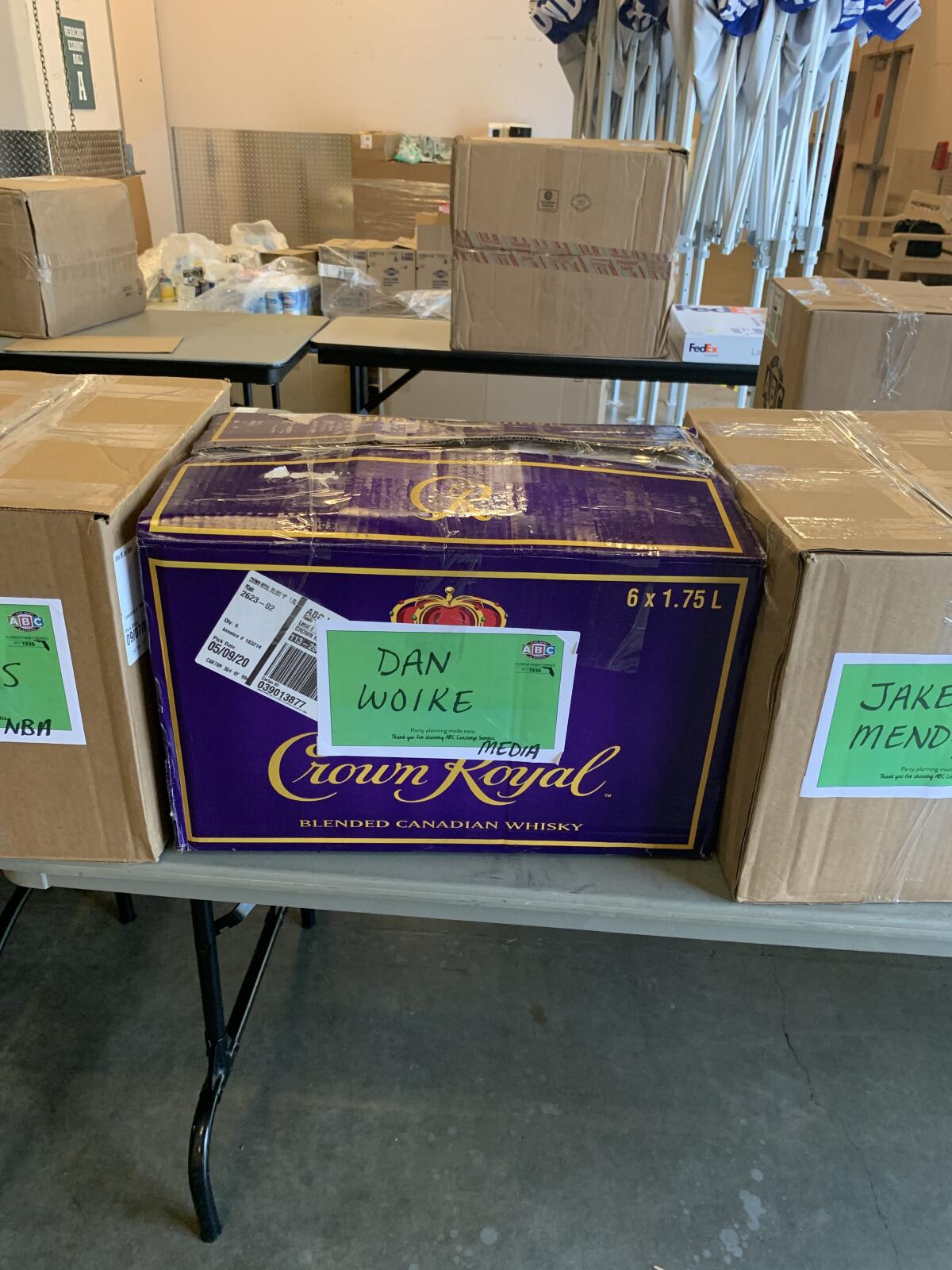
6. While Butler was the breakout star of the bubble and LeBron James was the Finals most valuable player, the most important person to bubble-dwellers was Kelly King. She’s the liaison for ABC Fine Wine & Spirits — the one liquor store that delivered to the bubble. She wouldn’t say how much was ordered or how much money was spent, but she did say there wasn’t a single day in the bubble that ABC didn’t fill an order.
5. As it became clear the bubble was about to wrap, I walked onto the court to get a photo taken. “Get off the court,” someone yelled. I thought it was security. Maybe the voice of God. Instead, it was colleague Broderick Turner from the upper deck.
4. One night the NBA did let us go to Three Bridges for happy hour. Pelinka was right. It was incredible.
3. The Lakers played incredibly loud music in their locker room all season, usually with a theme. As they hit the locker room to celebrate their title after Game 6 of the Finals, Chief Keef’s “Faneto” bumped through the walls.
2. Leaving the bubble was strange, entering the real world was scary and saying goodbye to the community wasn’t easy. It was a place where you could meet a stranger and develop a new friendship — in a COVID-19 world that just seems too risky. It might’ve been the biggest luxury.
1. For the first time in NBA history, reporters, league staff, officials, coaches and players all shared the same spaces. It was an incredible accomplishment, with only basketball tying them together. “And,” Marc Davis quipped, “let’s not break that record.”
More to Read
Go beyond the scoreboard
Get the latest on L.A.'s teams in the daily Sports Report newsletter.
You may occasionally receive promotional content from the Los Angeles Times.
